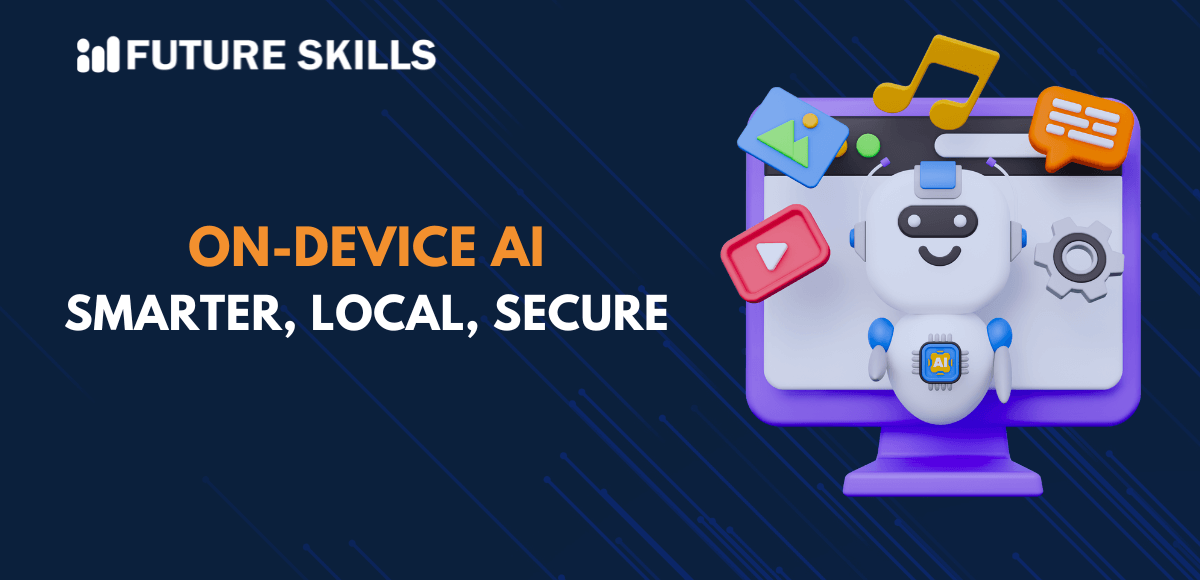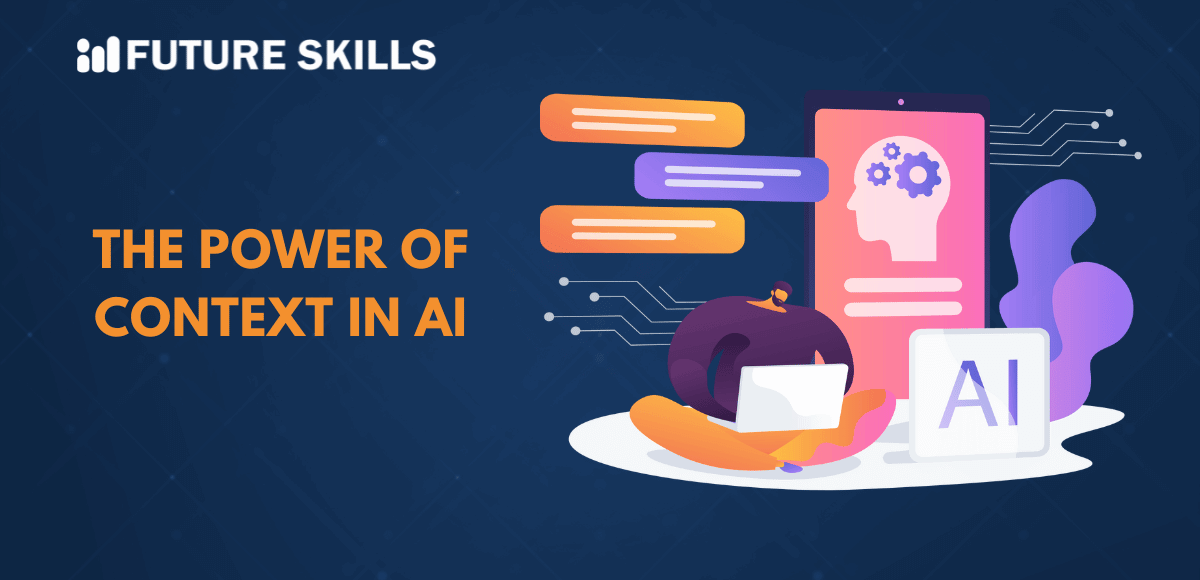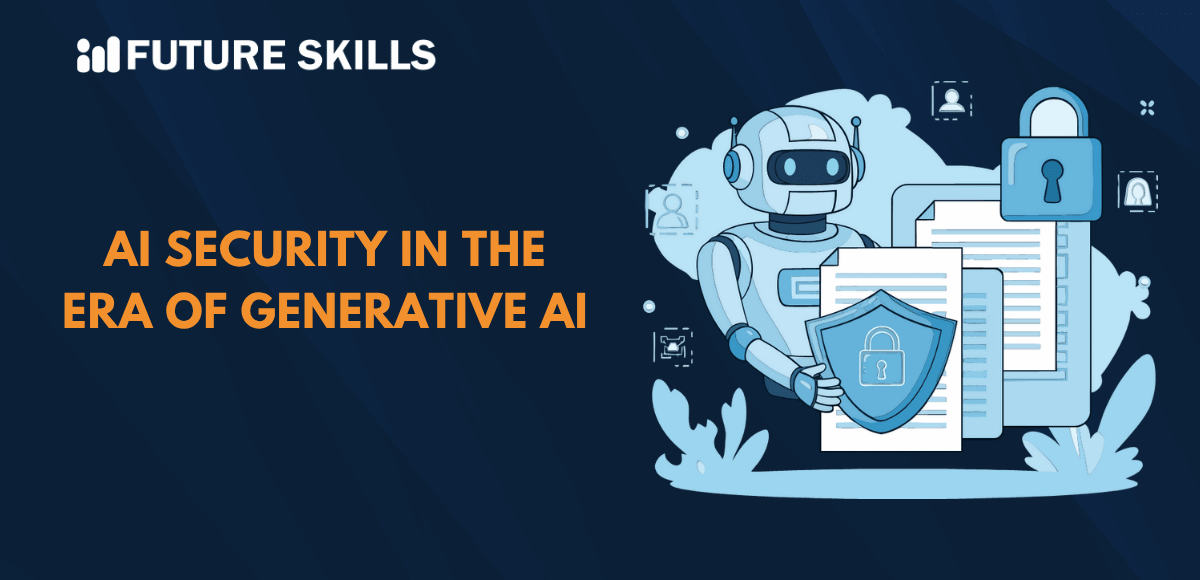In the 21st century, Artificial Intelligence (AI) is undoubtedly considered to be one of the most promising digital technologies. Due to the rapid advancement of AI technology, there has been a surge in the deployment of AI models on diverse devices. The growing integration of AI models in terminal and edge devices has been driven by the expansion of the Internet of Things (IoT) technology. Additionally, the need for data processing on a real-time basis has also contributed to the growth of on-device AI models in the current times.
In order to learn about on-device AI models, it is essential to adopt a holistic approach. Some of the chief areas that must be looked into include the current state, technical complications and challenges, and the future trends relating to on-device AI models.
Level up your AI skills and embark on a journey to build a successful career in AI with our Certified AI Professional (CAIP)™ program.
An Insight into On-Device AI Models
In recent times, the concept of an on-device AI model has been gaining a lot of attention. On-device AI models refer to the AI algorithms that are capable of directly running on a device. Such algorithms can run on devices such as smartphones or smartwatches. Thanks to the emergence of on-device AI, there is no need for sending data to remote servers in a back-and-forth manner. With the help of on-device AI models, it is possible to process information at the point of data collection.
In order to understand the relevance of these models, the survey on on-device AI models focuses on their chief characteristics:
- In the case of on-device AI models, the entire data processing operation is performed on the very device itself. Thus, the hardware of the device is put to use.
- The on-device AI model boosts privacy by making sure that data stays on the device. Therefore, there is a reduction in the possibility of data breaches and other kinds of attacks.
- A unique attribute of on-device AI is that it is not dependent on internet connectivity to operate. This feature undoubtedly makes it highly reliable in regions with poor or no internet connectivity.
- Due to the real-time processing of data, applications that rely on immediate responses, such as autonomous vehicles, can operate smoothly.
- The applications that are powered by on-device AI models support seamless functionality, which can enhance the satisfaction of users.
The on-device AI model survey sheds light on the fact that the novel concept holds immense promise. It surely acts as a reliable, efficient, and private alternative to conventional cloud-based AI models. Are you wondering – What is an example of on-device AI? A common example is the camera of a smartphone that is capable of enhancing the photo quality by applying filters and improving the focus.
Level up your ChatGPT skills and kickstart your journey towards superhuman capabilities with Free ChatGPT and AI Fundamental Course.
Application of on-device AI models
The application of on-device AI models is undoubtedly gaining momentum in the current times. The survey on the on-device AI model highlights some of the main domains where the presence of these novel models is increasing.
-
Smartphones
The manufacturers of smartphones are incorporating on-device AI models into the devices. In case you are thinking about on-device AI model examples, you need to look at the translation feature in smartphones. Smartphones with on-device AI models can translate languages in real-time, making communication simpler.
-
Wearable devices
One of the most popular on-device AI model examples exists in the health care setting. Wearable devices such as smartwatches utilize these novel models for monitoring health metrics in individuals. The adoption of on-device AI models in wearable devices helps monitor sleep patterns, heart rate, as well as physical activity.
-
Autonomous vehicles
In current times, when the concept of autonomous vehicles or self-driving cars is gaining popularity, the reliance on on-device AI models is increasing. These models assist in the real-time processing of a large volume of data from the sensors in an efficient manner. These models are capable of supporting automation through route planning and the detection of obstacles. Are you looking for an answer to the question – What is an example of on-device AI? If yes, you must certainly consider autonomous vehicles.
-
Smart homes
Now, one can also witness the presence of on-device AI models in homes. Devices such as smart speakers make use of these models in order to process voice commands. As a result, there is a significant improvement in response time. Moreover, thanks to these novel models, there has been substantial improvement in security systems in modern homes.
-
Augmented Reality (AR) systems
On-device AI models have been playing an important role in boosting AR systems. Due to these models, it has become possible to process data locally and improve overall speed and privacy. Moreover, these models are capable of handling tasks with high complexity, such as spatial mapping as well as object recognition.
The on-device AI model survey highlights how these models are being adopted for diverse purposes because of their functionality and versatility.
Become a certified ChatGPT expert and learn how to utilize the potential of ChatGPT that will open new career paths for you. Enroll in Certified ChatGPT Professional (CCGP)™ Certification.
Challenges Associated with On-Device AI Models
The emergence of on-device AI models has been nothing less than transformational. However, it is equally important to remember that a number of challenges are associated with these novel models. The survey on the on-device AI model captures some of the major challenges that need to be addressed currently.
-
Restricted computing power
One of the most common challenges that arises in the context of on-device AI models is limited computing power. Devices such as smartphones and smartwatches have low computing power. Similarly, there exist limitations in terms of memory in comparison to cloud solutions. These limitations act as major bottlenecks that impede the overall effectiveness and efficiency of on-device AI models.
-
Concerns regarding energy efficiency
A serious question that arises while integrating on-device AI models revolves around energy efficiency. These models can drain the batteries of smartphones, smartwatches, and other devices quickly. Moreover, they can also lead to overheating of the devices due to the data processing operations. There is a need to optimize the models so that energy efficiency can be ensured.
-
Limited expertise
Even though on-device AI models have immense potential, they are fairly new. Due to the newness of on-device AI, there is a considerable shortage of talent and expertise. There is a need to nurture professionals who have expertise in not only Artificial Intelligence but also hardware optimization.
-
Complex nature of integration
The integration of on-device AI models into diverse devices is not an easy task. One has to consider a broad range of technical and non-technical aspects so that these models can be optimally used. For instance, high emphasis has to be laid on compatibility aspects. At the same time, it is essential to focus on performance as well so that the devices can function optimally after the integration.
-
Scalability concerns
A major challenge that arises in the context of the on-device AI model revolves around scalability. These models typically have limited scalability. This concern arises mainly due to hardware constraints. This challenge has the potential to hamper the usefulness of on-device AI models in the practical setting.
Excited to understand the crucial requirements for developing responsible AI and the implications of privacy and security in AI, Enroll now in the Ethics of Artificial Intelligence (AI) Course
Bright Future of On-device AI Models
The survey on the on-device AI model will remain incomplete without covering the future prospects of these models. In the present day and age, the relevance of on-device AI models is immense. In the future, its relevance is likely to reach new heights.
As the application of the on-device AI model is increasing with the passage of time, its future looks very promising. Furthermore, with technological advancement on an ongoing basis, these models may gain more prominence. The advancement in chip technology is likely to play a major role in boosting the landscape of on-device AI models. Similarly, the adoption of devices with these models may surge further in the future because of the rising concerns relating to privacy aspects.
However, it is necessary to bear in mind that the challenges relating to on-device AI models need to be addressed. This is because these elements may limit the overall relevance and usefulness of these models in the real-world setting.
Final Words
The concept of on-device AI models has been gaining immense popularity in the current times. The transition of AI models from the cloud environment to devices has the potential to give rise to a host of advantages. These novel models can boost privacy and support offline functionality. Within a short span of time, one can see that the presence of on-device AI models is expanding in diverse devices, including wearable devices, smartphones, autonomous vehicles, and many more.
However, in order to boost the overall effectiveness of on-device AI models, it is crucial to address the existing challenges. Some of the common challenges are restricted computing power, energy efficiency concerns, limited expertise, and many more. Regardless of these challenges, on-device AI has immense potential. Boost your skills and stay ahead by earning an AI certification that covers the latest advancements and practical applications in this exciting field.






